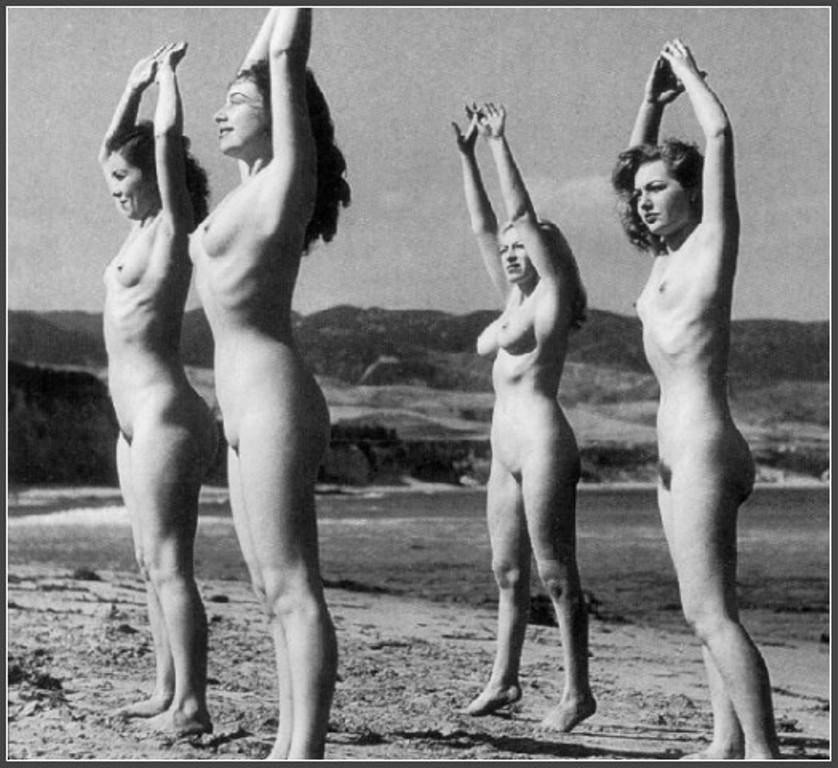For months now, I have been puzzling over how to introduce the numerous Japanese photographers who prospered in a culture that developed in the aftermath of Vladimir Nabokov’s Lolita in 1955 and the subsequent open attitude toward nudity and sexuality that transpired in Western Europe and North America.
The solution presented itself a few weeks ago. For the past couple of years, I have been on the lookout for new material after realizing that the fascination with young nude girls was not a phenomenon limited to a handful of artists of the hippie generation. An item called Dream Girls recently appeared on the secondary market and as I did not recognize the cover image, I figured it would contain images by artists I had not heard of. Once I received it, I realized it was not a conventional publication. Although I found many models and artists I did not know, there were many I did recognize and with a little digging, I confirmed my suspicions: it was a bootleg publication of work taken from numerous photographers published in Japan in the early 1980s.
I don’t claim to have a clear solution to the issues of intellectual property. Staunch capitalists would insist that photographs and other intellectual property—inventions, music, film, etc.—be treated like any other property and respected absolutely. This is not practical simply because intellectual property is not the same kind of thing as physical property which has a natural scarcity, a key component in capitalist principles. However, I can’t say I condone what this publisher did either since, as things stand, artists must endeavor to survive in a highly monetarized culture with vulturine agents and companies exploiting their talent for personal gain. Dream Girls was published by Passion Press in New York in 1996 and is ostensibly copyrighted and has an ISBN. Instead of taking an educational tack as others have done, the images were reproduced from books almost certainly without the artists’ knowledge and marketed as simple eye-candy with lowbrow comics interspersed throughout the pages. No information about any of the photographers, illustrators or their work is given.
The remarkable thing about the “Lolicon” phenomenon in Japan is the level of freedom and creativity exhibited. Unlike Western countries with a peculiar tendency to regard human sexuality with suspicion or contempt, Japan’s isolation from this powerful puritanical culture has allowed them more freedom of expression—still apparent in the multitude of manga imagery available. This is changing, however, as the Japanese economy becomes a more integral part of economic globalization and must necessary adopt the biases of the dominant Western forces driving it. Photography books featuring young girls are becoming more expensive and hard to find so there is a new urgency to try to objectively educate the current generation about what has come before.
One of the amusing aspects of this book is how it deals with censorship. Because of its marketing tactics, it makes sense to simply avoid any frontal nudity at all. The images were carefully selected and cropped accordingly. Thus what you see here is not what you would have seen in the original publications and in the more extreme cases, I make some comment. Even the quality of the reproductions were poor with low resolution and little care in alignment; scanning these images for this post was something of a nightmare. I must commend this publisher for one thing though: at least he did not disfigure the images with unsightly marks or erasure of the genital area. Some particularly egregious examples of this—presumably in an effort to comply with certain laws—will be offered in a future post.
And thus I am afforded the opportunity to give you a solid overview of late 20th Century Japanese photographers (and a few Europeans who published in Japan) without the exhaustive research necessary for a single artist. One of the reasons I have been less productive lately is that I have taken an interest in transcribing and translating foreign books in an effort to offer you more about the background of these pieces. In the future, many of these images will be presented again with better quality, background and with a greater respect for the artist’s intent.
The greatest number of images in the book come from Yoji Ishikawa. He is probably the most prolific of those covered here and the best known the in the United States. I remember rejecting one of his books because the seller had not thought to include more images of the little girls. Later, when I saw a better selection of images, I realized how delightful they were. Even given my obvious bias, I think Ishikawa’s work with the younger girls is more imaginative while his work with teens and young women seem to fall back on a bland conventional expression of eroticism.
This image is of Sophie Despineux, admittedly the artist’s favorite model. It is too bad a better example wasn’t found for Dream Girls. I think the special appeal was not so much due to the girl’s photogeneity, but because she was imaginative and willing to engage in visual experimentation with the photographer.
Chloé is one of my favorite models as I imagine that Ishikawa posed her in a way that Charles Dodgson (Lewis Carroll) must have posed his models. Here she is feigning sleep, a favored tactic in Victorian times to help with the long exposures. The lower part of this image was cropped.
Once I started making some headway with learning about Japanese artists, Shizuki Obuchi became my favorite. I could recognize the bright charm he brought out in his young models even from a rough reproduction of the cover of one of his books. The image below comes from a book that translates to The World of Lolicon. This image is severely cropped as the original features a pair of girls named Hélène and Claire. Although this girl is otherwise completely naked, this artist favors girlish accoutrements like bows, ribbons and other hair ornamentation. Obuchi is recognized for his mastery of the genre and even wrote a book, How to Shoot Little Girls. I am currently transcribing that book and hope to share some of the insights in a future post.
Another top photographer of the genre is Takashi Kuromatsu. He covered a wide age range with great skill. This image comes from Le Petite Parisienne, probably his finest work.
People often assume that because of the “eye-candy” quality of this subject matter, only men engage in this kind of photography. That is far from the truth and it is my experience that women photographers consistently express a heightened erotic tension in their work. One of the best early examples is Hiromi Saimon. The next two images come from a book called Märchen Story (Märchen means fairy tale in German) and features Yuka Hayami, a model with a large following in Japan. Saimon also produced an excellent book, KinPouGe, featuring a French girl named Marianne.
Like Sawatari, this artist played with the Alice theme incorporating a doppelganger for the model in a number of images. A point I find amusing here is that genital display is acceptable because it belongs to a doll.
I don’t know if Jean-Louis Michel is really French or if this is the alias of a Japanese artist. I will know more when my transcriptions are complete. However, his books on young girls (I know of at least three) were only published in Japan and this is the case for a handful of other European photographers as well.
At first glance, this scene may seem to be from a naturist magazine, but it is obviously staged with the girls being cued to disrobe at the same time.
The remaining artists seem to have become known from only one major work or some book was published without mention of the artist’s name.
This image is from Little Pretenders and shot by Takao Yamaki.
Shot by another European, Patrick Morin, this image was published in a book calledLolita (Part I). It is far superior to its sequel which was a compilation of images from another photographer entirely containing less artful spontaneous naturist shots. I suppose it was a crude attempt by the publisher to capitalize on the success of the first book. I find it odd that this image was chosen as the angle and costume in this shot makes the model appear less youthful than she does in her other photographs.
The next two images come from a compilation of several artists under the title Lolita Sisters featuring Japanese girls exclusively. I had not heard of either of these artists before my recent investigations. The first is by Kunihiko Shinoda who made the largest contribution to the book.
This image is by Masayoshi Kondo, better known for his book Little Angels.
The last two images are from books that seem to be mainstream publishing efforts but the artist is not identified. There are a number of books like these in Japan and Europe that feature one artist’s coverage of just one model. From background clues and a tip from a fan (see comments), it appears that the first girl was Danish and the photo shoot took place in Copenhagen. The book is called Comme La Nymphe.
This image comes from a book called Strange Little Lady but the original Japanese indicates that she is strange in the sense that she is foreign (a Caucasian girl) as opposed to being “odd” in character. She is not given a name and the work reminds me of the style of Charles DuBois Hodges except for the use of color.
One or two of the images may have come from Sumiko Kiyooka—which is in the correct time frame—but I did not include them because I could not make a positive identification. Other important artists were not included here because they came along later or published outside Japan but it would be fair to include them in any survey of Japanese artists; Ayako Parks, Nobuyoshi Araki and Satoshi Kizu come most immediately to mind. There are also many others who did extensive work with little girls, but did not include nudes and they will be featured here in due course as well.
I could naturally use some help with more details on the artists covered here, but as it is my hope that Pigtails in Paint be more a community collaboration, I have posted the remaining images I could not identify on a special page for readers to examine and share their knowledge. I invite you all to take a look.
"http://www.pigtailsinpaint.com"











































